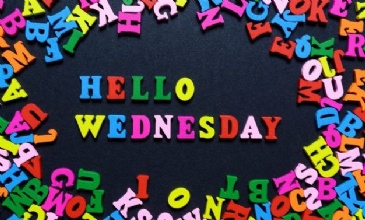Wednesday 24th June 2020

Midweek!
Maths I am learning to place objects into equal groups
Get started by counting in steps of numbers, 2, 5 and 10. If you feel like you’re an expert now, you might like to give counting in 3’s a go!! https://www.youtube.com/watch?v=I_cn87hOCDM (or 4s,6s etc)
Today we begin looking at multiplication again. To start thinking about multiplying numbers we first do something called repeated addition. This means adding equal groups together. E.g. 3 + 3 + 3 + 3 = 4 x 3 (4 lots of 3 is the same as 4 times 3, 4x3).
Follow the PowerPoint Add Equal Groups then have a go at the activities attached.
English Can I write a postcard?
Take a look at slides 12 and 13 at the post card Jack sends to the Giant. A post card usually has a picture on one side and the message on the other side along with the address and stamp.
Cast you minds back to term 1, we pretended to visit Scotland and wrote postcards from there. We drew a picture of something we thought was amazing or unique about Scotland on one side and wrote a short message on the other.
You may like to create your own post card (which you have done in English previously as well anyway), or you can use a real one if you have any at home.
I would like you to pick a fairy tale character from the book or another character and pretend to be them as you write your post card about an adventure you have been on.
I might pretend to be the Frog Princess (thinking about the Disney film) and write a post card from the swamps about meeting a talking frog. I would address my post card to my friend at home and tell them about where I am, whether I am having fun, that the frog claims to be a prince and that it’s really wet and warm in the swam... “Yesterday I saw a ferocious crocodile while I was in a boat and used all my power to paddle away! In the evening the swamp was lit up by beautiful fireflies. I wish you were here on this adventure with me”.
How much you can write on the post card depends on how big your post card is and how small you can make your handwriting to fit in everything you want to say. Usually a postcard will be a really short version of a letter and the picture is the main feature. Your picture can be a drawing, photograph, collage or painting. Include an address, made up or real, on the right-hand side underneath the stamp. Spend today planning your postcard, think of your character, where you are having your adventure and what you want to say or draw your picture. You have tomorrow to finish it all off too. I love writing postcards; I hope you have fun!
RWI Follow the link to YouTube for sounds, spellings and sentences or see below.
https://www.youtube.com/channel/UCo7fbLgY2oA_cFCIg9GdxtQ
All videos are released at 9:30am and will be available for 24 hours only.
If you are unsure about which set to follow please don’t hesitate to email to ask and I will guide you isla.aitken@ramsgateartsprimaryschool.co.uk
Note: Please feel free to attempt the English tasks above on occasion too.
Set 1 – h for horse
Spellings
1) hot 2) hand 3) hook
Sentences
1) Hang your hat on the hook.
2) The hob is too hot for your hand.
Set 2 – oo – look at a book
Spellings
1) brook 2) book 3) soot
Sentences
1) A brook is a small river.
2) How many books have you read so far?
Set 3 – oi - spoil the boy + Reading longer words – oo/ u-e/ ew
Spellings
1) spoil 2) tinfoil 3) avoid
Sentences
1) Avoid putting tinfoil on an apple, it will spoil it.
2) Do not drink toilet water it is poisonous!
Helpful links for parents and carers https://www.ruthmiskin.com/en/find-out-more/parents/
And don't forget Miss Spurrier’s speed sounds for extra practice (accessible at any time as an option)
RWI Set 1 sounds https://vimeo.com/414752875
RWI Set 2 sounds https://vimeo.com/414764363
RWI Set 3 sounds https://vimeo.com/414761386
Red words
Level 1 Red words: https://vimeo.com/417611100
Level 2 Red words: https://vimeo.com/417629553
Level 3 Red words: https://vimeo.com/417645041
Topic I know that humans can impact the natural environment in positive and negative ways.
Not every coast or beach around the world looks the same. Take a look at the these videos of beautiful coast lines from places around the world https://www.youtube.com/watch?v=4b9S-zo4Tmc https://www.youtube.com/watch?v=NF-NkFX4REQ (you can speed the video up by selecting the settings button and changing the playback speed)
Take note of the types of beaches; is there sand or are their pebbles? What kind of rock formations or cliffs can you see? Our coast lines in Kent are all white chalk cliffs, does everywhere else have chalk cliffs? Do all coast lines have beaches?
Make a list of similarities and differences about the coastlines and beaches that you see in the videos. You could do this by drawing a line down the middle of a page and list similarities on one side and differences on the other.
Can you identify five positive ways that humans impact the planet?
(a few examples to get you started e.g. humans work hard to use reusable items such as bottles, eat less fish and meat to avoid over fishing etc, we support and protect animals in many ways by having protected areas like nature reserves etc, humans try to develop new technology every day to help cure diseases etc)
